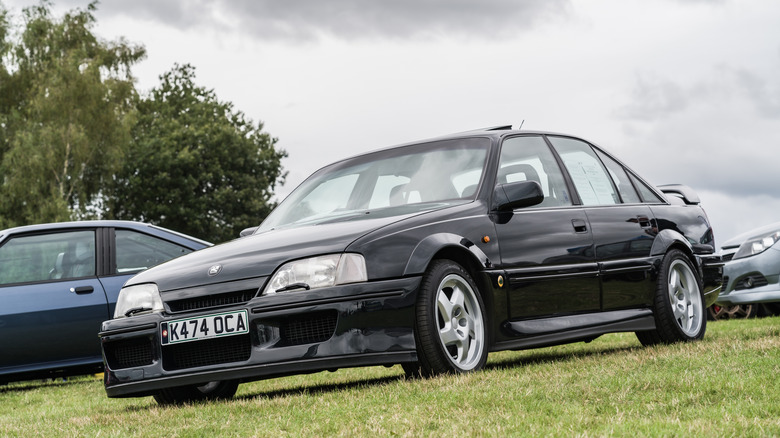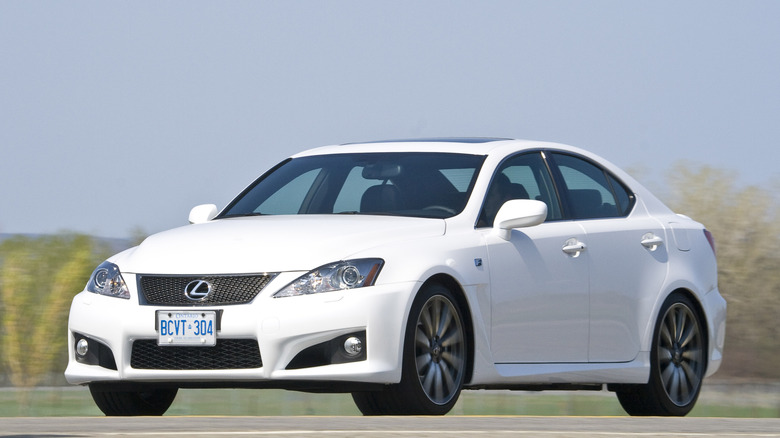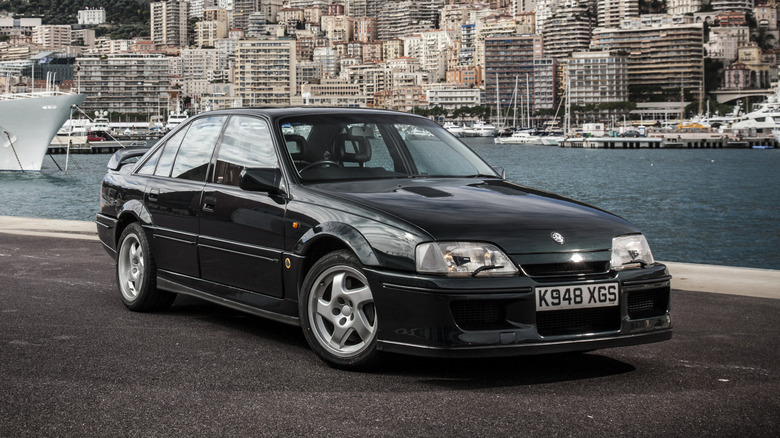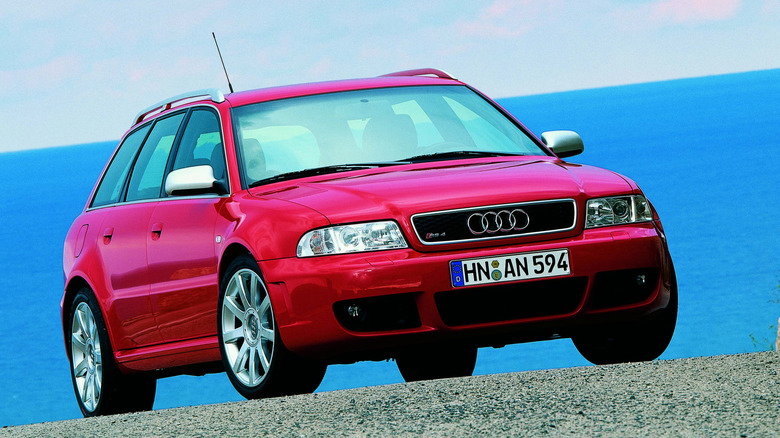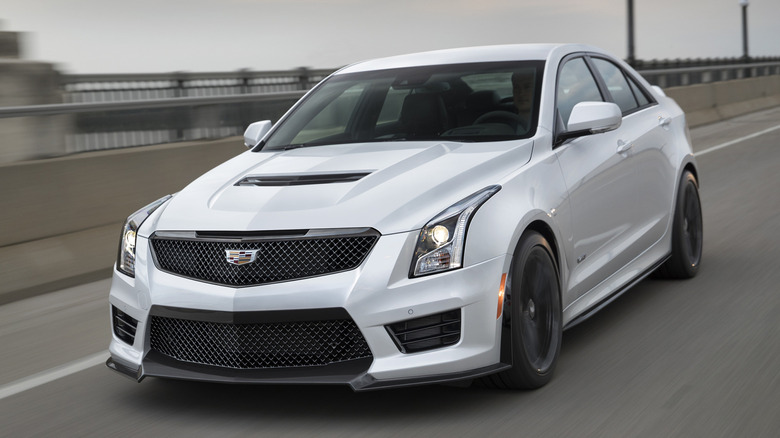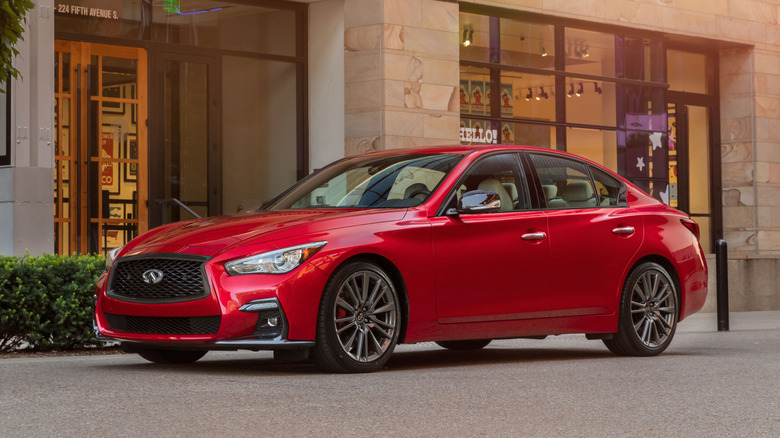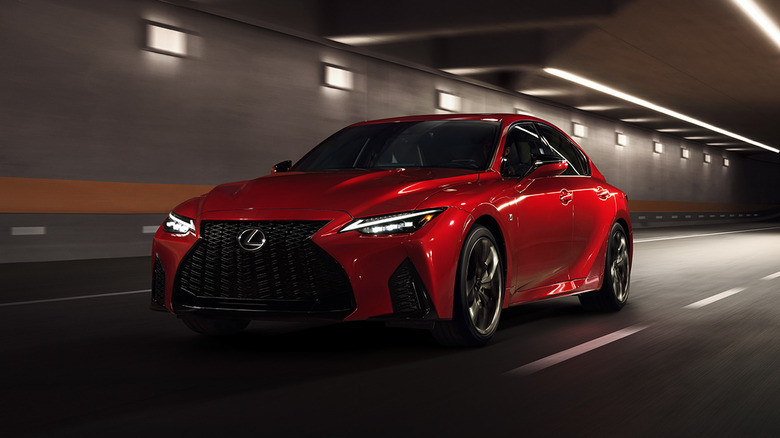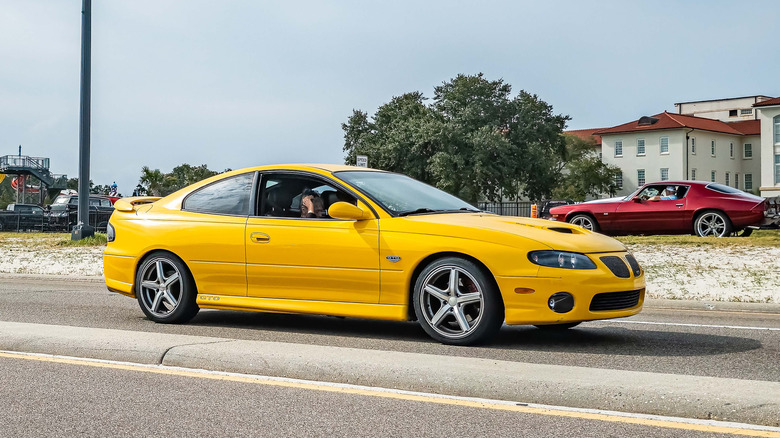7 BMW M3 Rivals That Deserve More Attention
There's a small group of cars that car enthusiasts always wax lyrical over, one of those being the BMW M3. While the original E30 M3 was a homologation special back in the 1980s, the car has morphed into one of the world's favorite performance cars. Not just coupes or sedans, but cars as a whole. It's beloved for its otherworldly performance and handling, amazing engine notes, as well as good practicality.
In the years since the M3's launch, a lot of other automotive brands have tried their best to join in on the action with rivals. BMW's closest competitors, Mercedes-Benz and Audi, have stayed in it with their AMG and RS lines, respectively. However, not every brand's attempt to take the throne from the Munich special really worked.
For some, things went over so badly we never saw another version of the car in question, though not always because they couldn't beat the M3. Several years and decades later, some of these M3 rivals are worthy of your attention, for a multitude of reasons.
Lexus IS F
Toyota showed the world that it could play ball with the big kids in 1989 with the launch of the Lexus brand and the wonderful original LS. 15 years after taking the luxury car world by storm, Lexus pulled out another ace up its sleeve: the F performance brand, with which it would attempt to conquer the best that BMW, Mercedes, and Audi had to offer.
The F brand launched with the IS F, based on the second generation Lexus IS. At its core, the IS F was an M3 competitor, and like the M3 of the same time period, it also used a big naturally aspirated V8. Specifically, it was a heavily modified version of the 2UR-GSE 5.0-liter V8, which was also found in the LS600hL of the time.
Yamaha was tapped to fettle the engine, and it featured some really innovative stuff including a dual-chamber intake for better performance. The 464 hp V8 that powered the IS F also had something else that the Germans could only dream of: incredible reliability. However, despite the IS F's many excellent qualities, it didn't really catch on all that much.
Lotus Omega / Carlton
While this one may have slipped under the radar for a lot of people, it also quite literally slipped under the radars of the police force. The Opel Lotus Omega, or Vauxhall Lotus Carlton as it was known in the U.K., was the stuff of legend. It was so fast, the U.K. government wanted it banned after it was used a getaway car in a cigarette-and-booze heist and simply outran police cars.
The Lotus version started out with the conventional Omega/Carlton, Opel/Vauxhall's RWD sedan that was offered in Europe throughout the latter half of the 20th century and the early 21st. The cars were built in Opel's Rüsselsheim facility in Germany, and then shipped off to Lotus in Hethel for all the necessary upgrades.
These included stroking out the 3.0-liter six-cylinder engine to 3.6 liters, adding two turbochargers, a six-speed manual transmission from the Lotus-engineered C4 Corvette ZR-1, and a stronger crankshaft, not to mention AP Racing brakes and a full aerodynamics package. With 372 hp and 419 lb-ft of torque, this was an unstoppable machine, and in every conceivable way, it's a proper performance car even to this day.
Audi RS4 (B5)
Audi's original RS2 Avant, famously co-developed with Porsche, made the world fall in love with the idea of a fast wagon. Arriving half a decade later, the next small Audi RS wagon had no involvement from Porsche, and Audi wanted to make it very clear that it wasn't messing around.
The RS4 Avant launched in 1999, though production actually started in 2000, meaning that they're soon becoming legal to import to the United States. To the dismay of many, the RS4 ditched the 2.2-liter I5 in favor of a 2.7-liter twin-turbo V6 engine. With 380 hp and 325 lb-ft of torque, the RS4 bested even the later 3.2-liter E36 M3 by 59 hp.
According to Audi, 0-60 mph took 4.9 seconds, while the top speed was, natch, electronically governed at 155 mph. That power went to all four wheels through a mandatory six-speed manual and standard Quattro AWD with a 50-50 power split. B5 RS4s are also pretty dependable despite what you might have heard, though some can have issues with the turbos. If you love Audi wagons, and especially fast Audi wagons, get ready to dig through the classifieds in a few months' time.
Cadillac ATS-V
Cadillac got serious about dethroning the Germans in the 2000s with the 5 Series-rivaling CTS, while also trying to appeal to an audience significantly younger than its most loyal customers, the elderly. In the 2010s, it went for a double whammy. The ATS was the first proper attempt by Cadillac to rival the 3 Series and C-Class, and as expected, an M3 rival followed close behind.
The ATS-V was the first and last of its kind. Instead of a powertrain with eight cylinders and the letters L and S somewhere in the name, the ATS-V used a 3.6-liter twin-turbo V6, coinciding with the M3 returning to six-cylinder power for the F80 generation.
With 464 hp and 445 lb-ft of torque, the ATS-V edged out a victory over the M3 and M4's 425 hp and 406 lb-ft of torque. In our review, we found it was also a joy in the corners, which is very unlike most American cars. However, very few enthusiasts found themselves choosing the ATS-V over the M3, or any of the German competitors, despite the ATS-V's lower price. While Cadillac has given this whole thing another shot with the CT4-V Blackwing, the ATS-V has gone largely unnoticed in the years since, so it's finally time to notice it.
Infiniti Q50 Red Sport 400
In 2014, Infiniti teased us with a souped up version of the Q50 that almost went into production and almost challenged the best the Germans had to offer. It also had an awesome name: the Q50 Eau Rouge, named after the most infamous corner of the F1 track in Spa-Francorchamps. Sadly, the concept never got the green light, but Inifniti did give us a consolation prize.
The Q50 Red Sport 400 was like a diet version of the Q50 Eau Rouge. The 3.0-liter twin-turbo V6 under the hood put out, you guessed it, a completely respectable 400 hp. It was a little down on the M3, but it was still a good amount of power.
However, Infiniti was languishing during this time, with an ageing lineup, and a single universal selling point across the entire lineup: a low price. The Q50 Red Sport 400 went unnoticed while it was around, but that wasn't because people ignored its good sides. We called it in our review of the Q50 Red Sport 400 — the car just didn't have any particularly good reason to choose it over an M3.
Lexus IS500 F Sport Performance
Although the original Lexus IS F is no longer around, Lexus continues to offer something very similar today. This gives Lexus the unique distinction of being the only automaker in the present day to do so. With the arrival of the current IS a couple years ago, which still rides on the same aging platform, Lexus decided to sweeten the deal with the IS500 F Sport Performance.
Even though those numbers after the model name carry little to no meaning nowadays, in the IS500, it's exactly what it says on the tin. The IS500 F Sport uses a version of the 2UR-GSE 5.0-liter V8 as the LC500, and, more importantly, the original IS F.
It also has a little more power than the original IS F, 472 hp, leaving it just one single horsepower shy of the latest RWD M3. Joy of joys, the IS500 is also RWD only, and power gets to the wheels through an eight-speed automatic. The V8 has no turbos and no hybrid system, just a 7,000 RPM redline and a fantastic old-fashioned V8 that's a real treat to the ears. It's a huge surprise that Lexus offers such a car in the first place, and while it may not be as pin sharp as the Germans, it's still a lovely thing.
Pontiac GTO
Back when GM used to do a lot of things properly, it had an idea to revive the storied GTO name in Pontiac's lineup, while also not cannibalizing sales of the Firebird. In a stroke of genius, but also in a stroke of GM style cost-cutting, GM tapped its Australian arm, Holden, and decided to base the new GTO on the Australians' Monaro. The steering wheel was moved across, and the styling was slightly changed, but the rest was mostly Monaro, but lo and behold: the 2004 Pontiac GTO was born!
Under the hood originally was a 5.7-liter LS1 V8 plucked straight from the Corvette, putting out 350 hp and 365 lb-ft of torque, and all that went to the rear wheels through either a lethargic GM four-speed auto or the much sweeter six-speed manual courtesy of Tremec. Like the Monaro, the GTO came with four-wheel independent suspension and a limited-slip differential as standard.
Later GTOs also introduced the 6.0-liter LS2 V8, which bumped power up to 400 hp and 400 lb-ft of torque, while also shaving half a second of the previous 5.3-second 0-60 time. The 6.0-liter could do it in 4.8 seconds, easily encroaching on sports car territory. The GTO was, to all intents and purposes, a budget M3 rival, and an old-fashioned one at that. Luckily, while the E46 M3 can't stop going up in value, the GTO is as affordable as ever.
